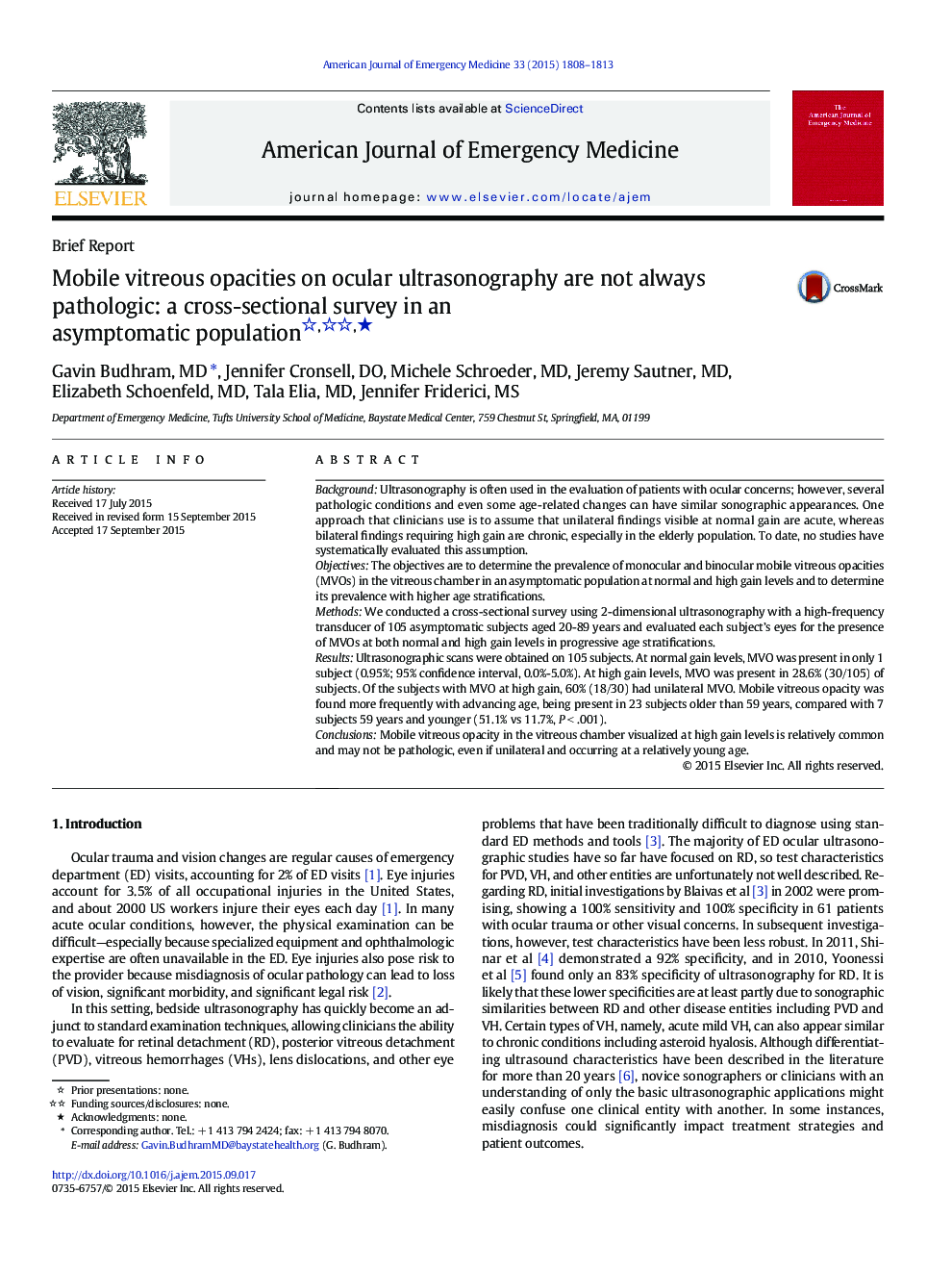| Article ID | Journal | Published Year | Pages | File Type |
|---|---|---|---|---|
| 3223536 | The American Journal of Emergency Medicine | 2015 | 6 Pages |
BackgroundUltrasonography is often used in the evaluation of patients with ocular concerns; however, several pathologic conditions and even some age-related changes can have similar sonographic appearances. One approach that clinicians use is to assume that unilateral findings visible at normal gain are acute, whereas bilateral findings requiring high gain are chronic, especially in the elderly population. To date, no studies have systematically evaluated this assumption.ObjectivesThe objectives are to determine the prevalence of monocular and binocular mobile vitreous opacities (MVOs) in the vitreous chamber in an asymptomatic population at normal and high gain levels and to determine its prevalence with higher age stratifications.MethodsWe conducted a cross-sectional survey using 2-dimensional ultrasonography with a high-frequency transducer of 105 asymptomatic subjects aged 20-89 years and evaluated each subject’s eyes for the presence of MVOs at both normal and high gain levels in progressive age stratifications.ResultsUltrasonographic scans were obtained on 105 subjects. At normal gain levels, MVO was present in only 1 subject (0.95%; 95% confidence interval, 0.0%-5.0%). At high gain levels, MVO was present in 28.6% (30/105) of subjects. Of the subjects with MVO at high gain, 60% (18/30) had unilateral MVO. Mobile vitreous opacity was found more frequently with advancing age, being present in 23 subjects older than 59 years, compared with 7 subjects 59 years and younger (51.1% vs 11.7%, P < .001).ConclusionsMobile vitreous opacity in the vitreous chamber visualized at high gain levels is relatively common and may not be pathologic, even if unilateral and occurring at a relatively young age.
